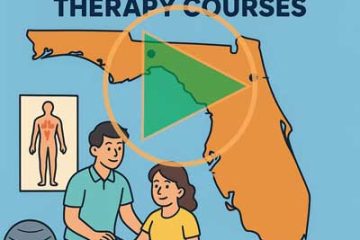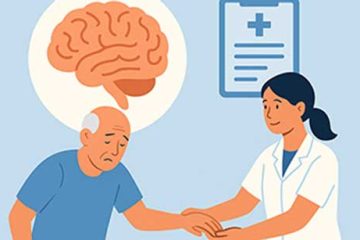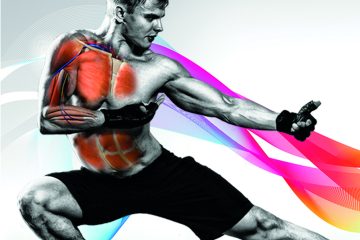Falls among older adults pose a significant public health concern, with over 1 million individuals hospitalized each year as a result of these accidents. The implications of such statistics are profound, not only affecting the physical health of seniors but also their mental well-being and overall quality of life. By fine-tuning skills focused on enhancing balance and coordination, healthcare professionals can play a pivotal role in reducing these alarming figures. This week’s theme of fall prevention underscores the importance of proactive measures that can be taken in clinical settings, specifically through the use of the CDC’s resource tools aimed at assessing fall risk through the use of STEADI (Stopping Elderly Accidents, Deaths, and Injuries) initiative.
In the continuing education course “Balance and Falls in the Elderly Population,” instructors provide invaluable insights into tools such as the STEADI (Stopping Elderly Accidents, Deaths, and Injuries) initiative. This evidence-based program equips healthcare providers with the knowledge necessary to identify seniors at risk of falling and implement tailored interventions to address these risks. By adopting the principles of STEADI in clinical practice, professionals can significantly decrease the occurrence of falls, injuries, and fatalities within this vulnerable demographic. Ultimately, such measures contribute to enhancing the independence and overall quality of life for older adults, enabling them to maintain their autonomy while reducing the risks associated with falls.
“As a healthcare provider, you can use CDC’s STEADI initiative to help reduce fall risk among your older patients.”
CDC Reference
STEADI – Stopping Elderly Accidents, Deaths, and Injuries
Additional CDC Resources for STEADI-Stopping Elderly Accidents, Deaths, and Injuries
They are trying to promote a couple of themes. One is to start a regular exercise program with the guidance of your physician, physical therapist, and other health care providers. The second component is making your home safer, so look at that home environment. Medication review is the third leg, followed by checking your vision. Many factors go into fall risk, but these are some of the major ones and ones that they’ve decided to focus on so that individuals can be empowered with their health care and start to ask those questions and maybe go to their health care provider to talk about these issues.
Community Screening
One of the things we’ve done with these tools is take them out for community screenings. We’ve done them in environments that aren’t necessarily ideal. We’ve done it in a parking lot. We put the lines on the parking lot using chalk. The chairs we’re using don’t have arms on them, but we ensure that we have enough people to stabilize the chair so it’s safe. We can then do all these tests fairly quickly and talk to individuals about fall risk.
At most community screenings, individuals who get there are usually fairly high-functioning, so they don’t necessarily show high risk. However, it allows us to have that discussion with them, start to talk about fall risk and the importance of exercise and activity, and then maybe they can use this information for other people they know who may be having fall risk and help guide them into the medical system.
Four-Stage Balance Test – Part of STEADI
This test is part of the STEADI test. It’s the Four-Stage Balance Test. I will see whether she can stand here for 10 seconds with her eyes open and her feet together.
In the second part of this test, you move the heel of one foot so that it’s in the arch of the other foot. That’s right. Right there. And again, we’re going to do this for 10 seconds. We’re changing the base of support throughout this. These are all 10-second tests because they are screening tests. Good.
Now, please put one foot in front of the other. It’s your choice which one goes in front. Try to get it directly in front. Now, this is the test we’re looking to see if they can do for 10 seconds. If they cannot do this for 10 seconds, they are at higher risk for falls, but this test is part of the Four-Stage Balance Test.
Then, for the last part, I’m going to have you stand on one leg. Ready, and go. It’s a little bit shorter than some of the other tests, but again, it’s just a screening test. And relax.
So, with each of these tests, I can take these different tasks and build them into my treatment or give them as part of the home exercise program.
Additional Resources for STEADI

This fall prevention course and many others within the All Access HealthClick Subscription provide clinicians with numerous resources for adequately evaluating and treating their clients for balance dysfunction and fall prevention. Choose from many courses that focus on balance and fall prevention. Below is a small sampling of the courses within the program.
Invisible Trauma: Recovery from Complex Concussions
Diabetes-Implications within Rehabilitation Programs
Progressive Vestibular Treatments for the Over 60 Population
References
Barq, Rabab M., et al. “The use of a primary care provider survey to implement a fall prevention program in an urban hospital system.” Surgery 170.4 (2021): 1255-1259.
CDC Centers for Disease Control and Prevention: STEADI -Older Adult Fall Prevention
Gallo, Estelle, et al. “Determining whether a dosage-specific and individualized home exercise program with consults reduces fall risk and falls in community-dwelling older adults with difficulty walking: a randomized control trial.” Journal of Geriatric Physical Therapy 41.3 (2018): 161-172.
Lin C-C, Meardon S, O’Brien K. The Predictive Validity and Clinical Application of Stopping Elderly Accidents, Deaths & Injuries (STEADI) for Fall Risk Screening. Adv Geriatr Med Res. 2022;4(3):e220008.


